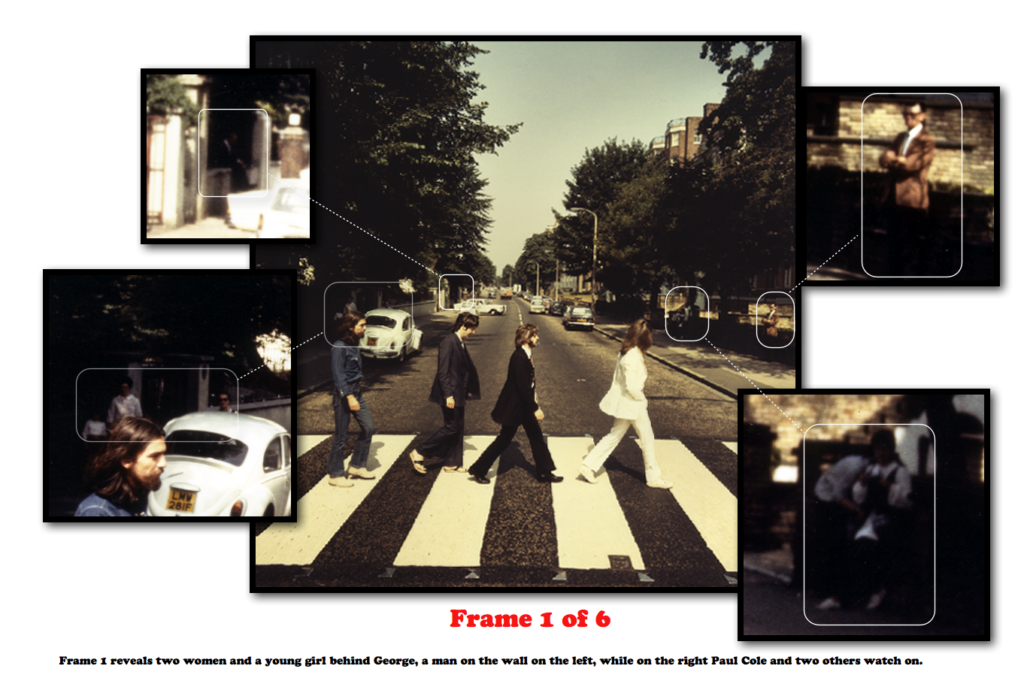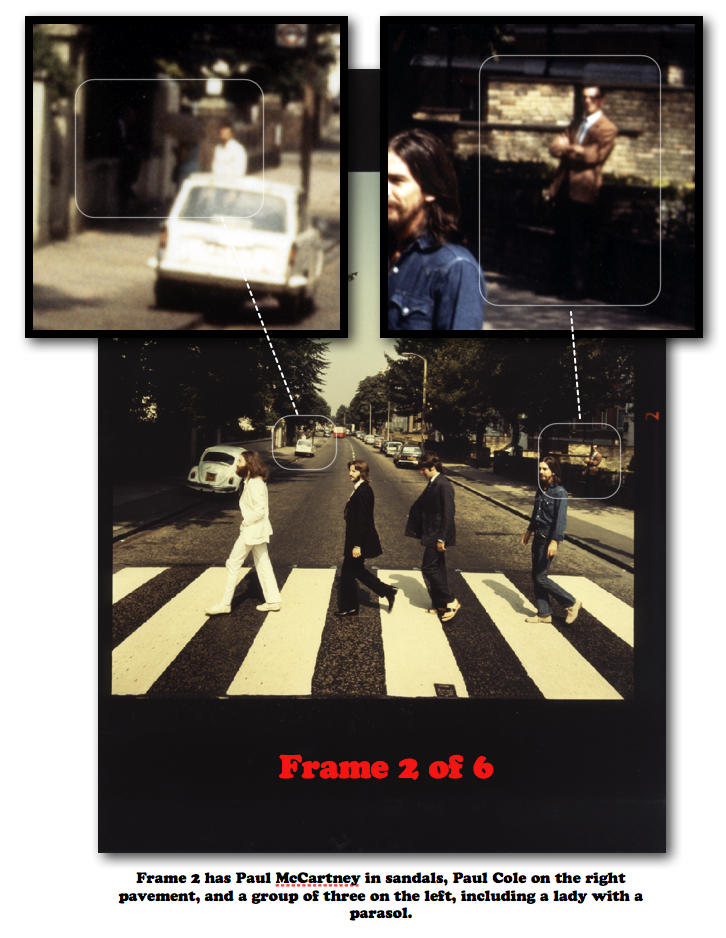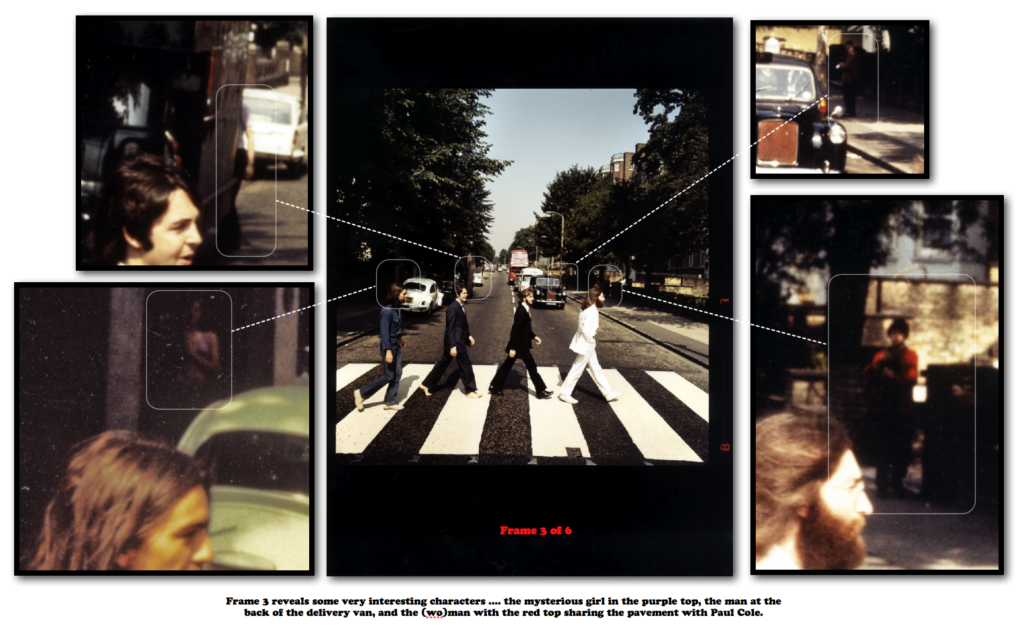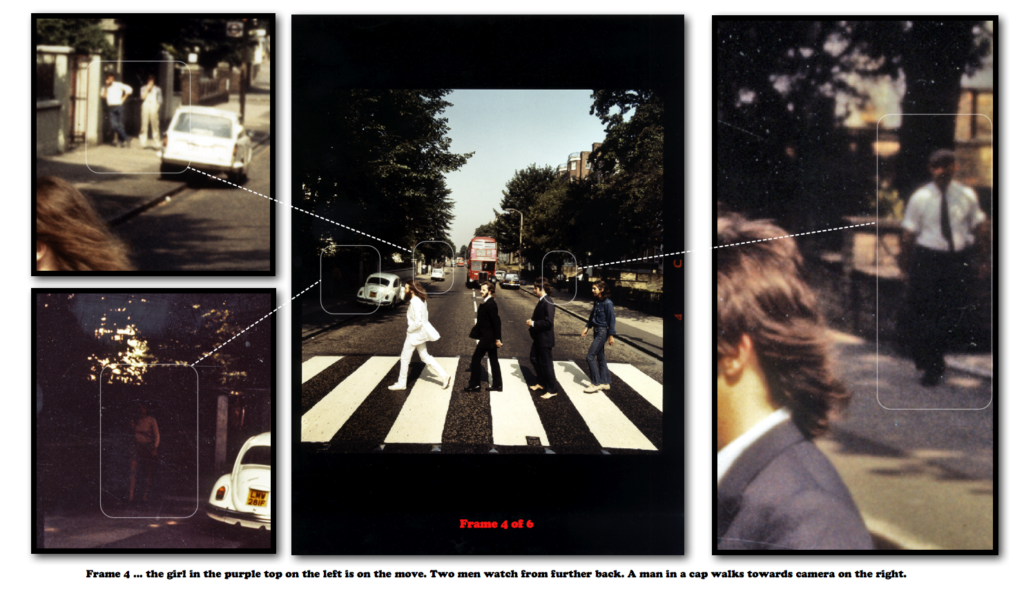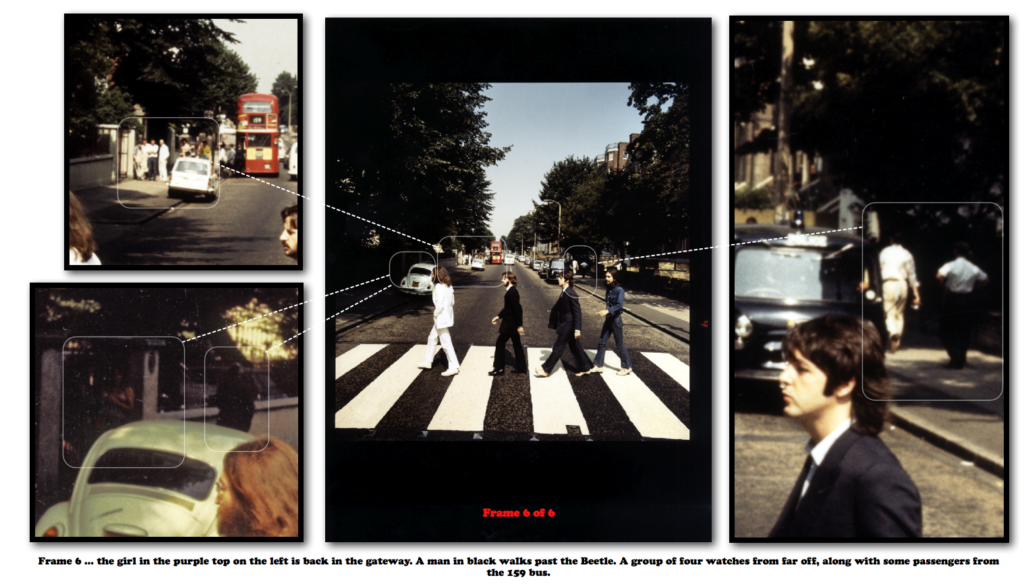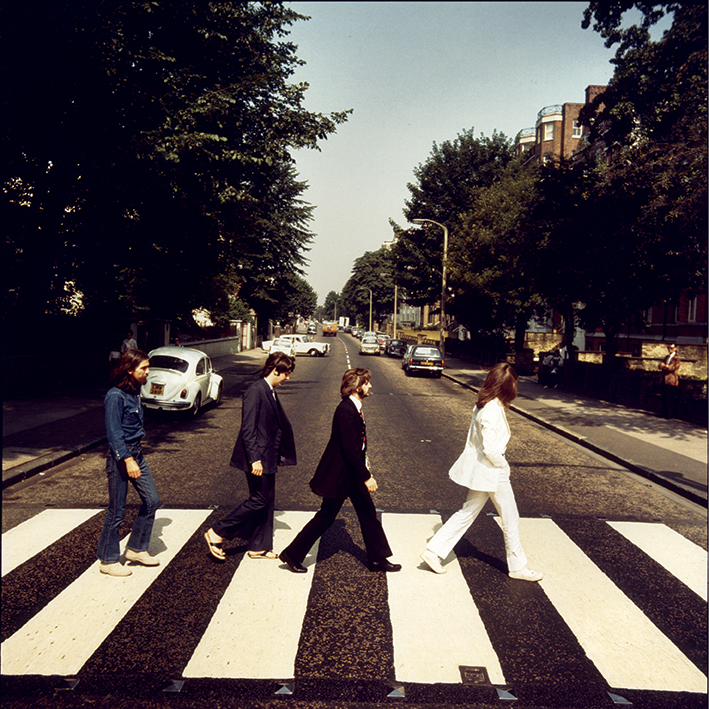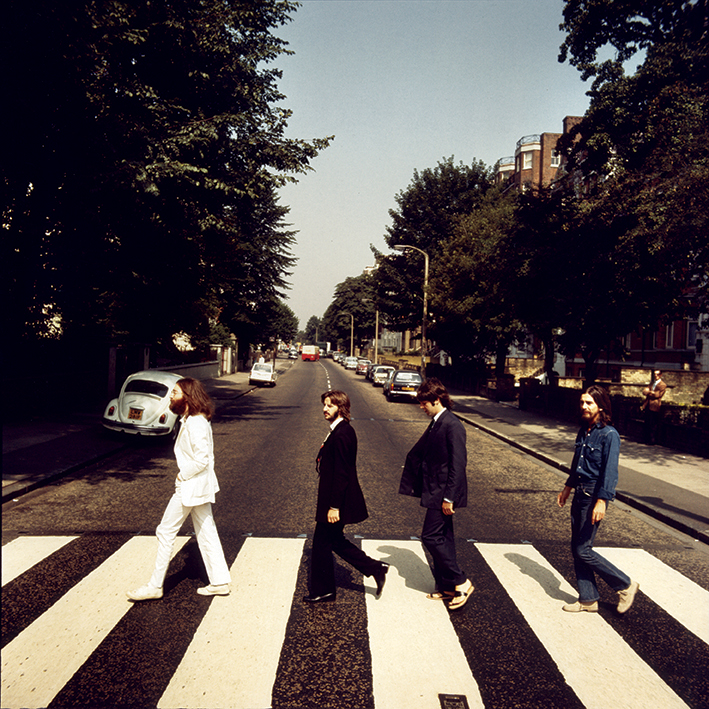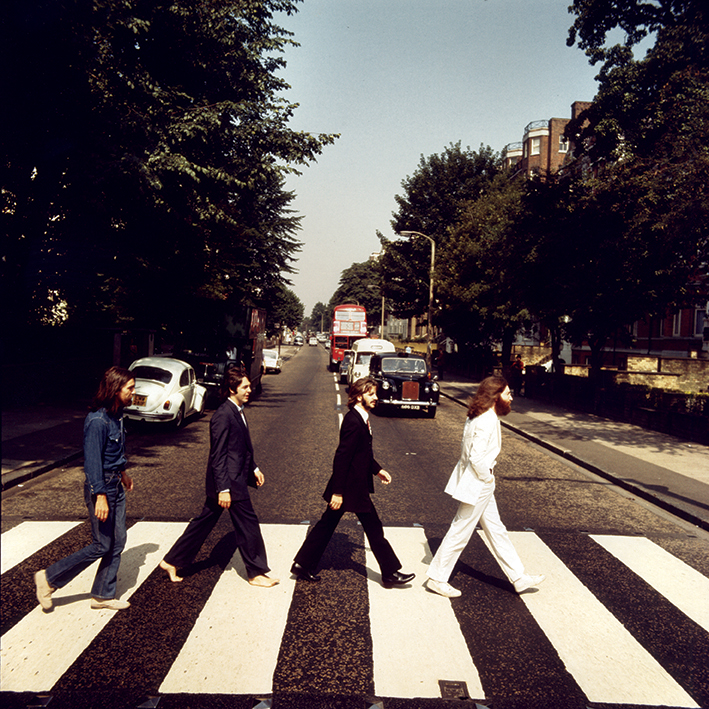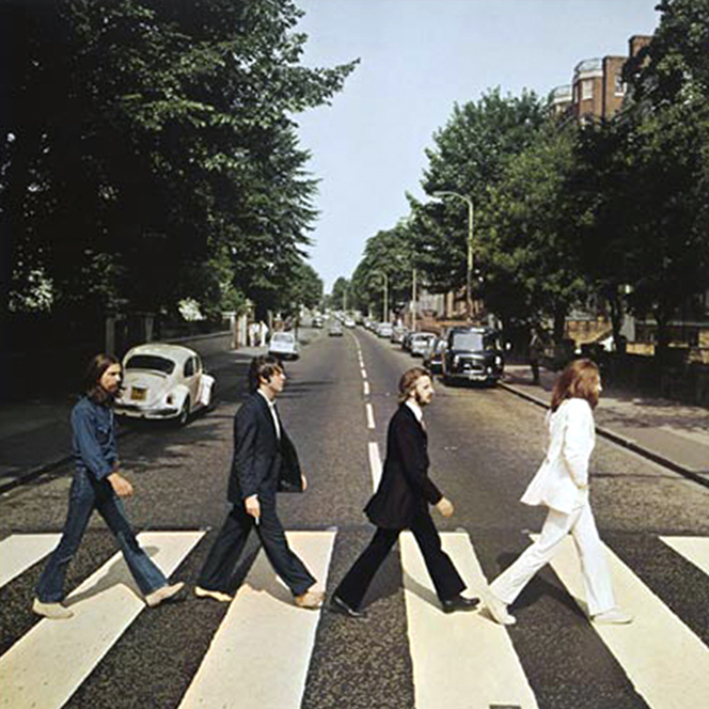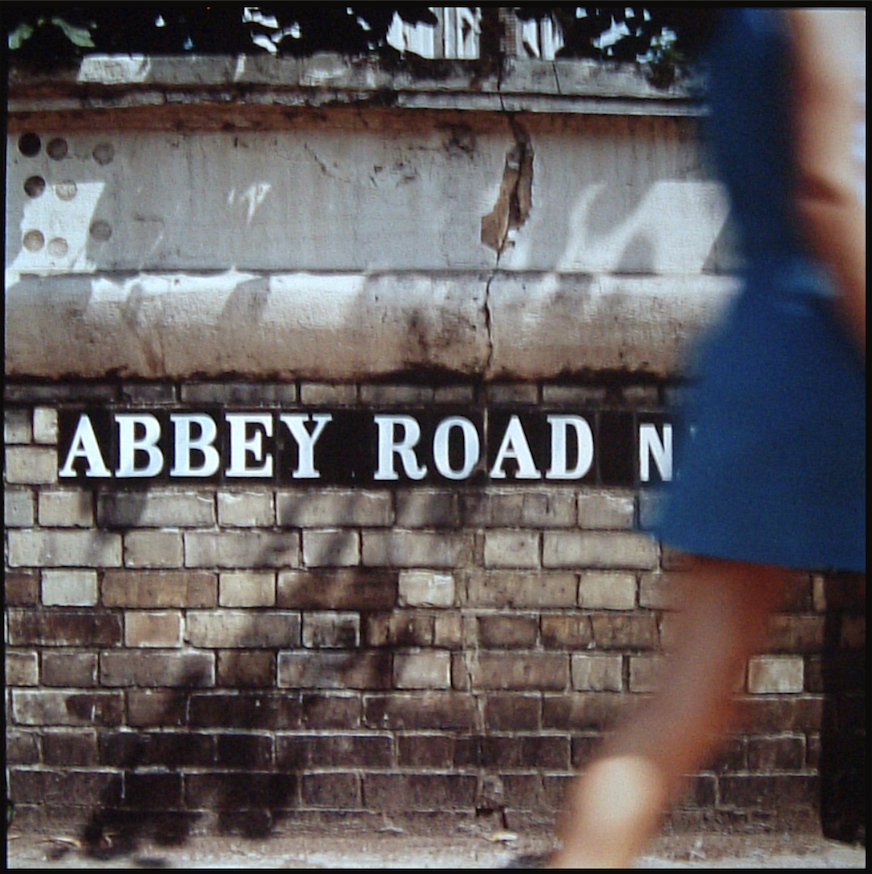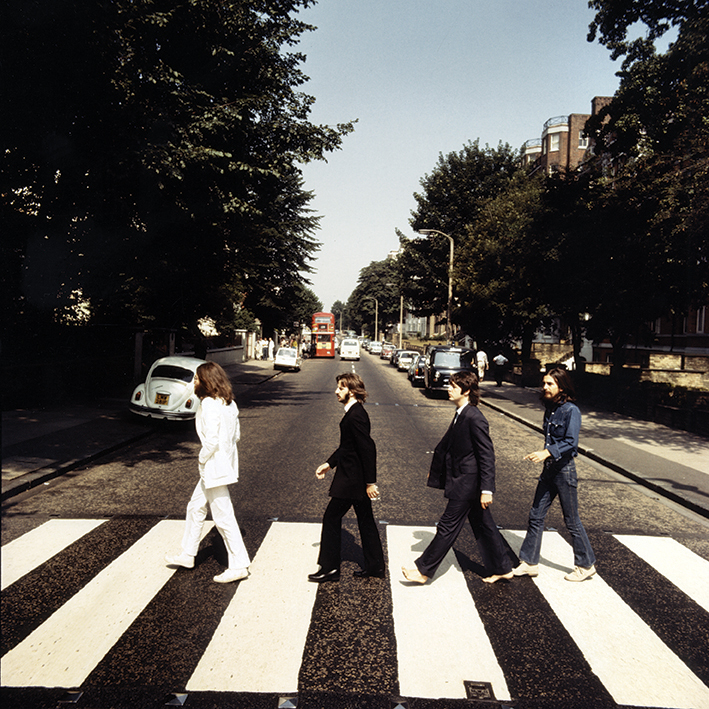Beatles and Bystanders
Into the shadows on the Abbey Road sessions
8 August, 1969. A Friday. The date of one of the most famous photo-shoots in rock ‘n’ roll history. John Lennon, Paul McCartney, George Harrison and Ringo Starr walk over the zebra crossing next to Abbey Road studios. There and back. Three times. Six clicks of the shutter. Just six photographs, and the shoot was over. Three frames showing the Beatles crossing from left to right, and three walking from right to left. The same order in each of the six frames – John Lennon first in white, then Ringo Starr in black, Paul McCartney in grey, barefoot, holding a cigarette in his right hand (all three in Tommy Nutter suits) and at the back, a denim clad George Harrison.
The fifth frame of six, showing a left to right traverse, was chosen as the actual cover. Abbey Road (the first British Beatles LP without the name of the band or the title of the album on the front) was released in the UK on 26 September 1969 and debuted at number 1. Rolling Stone magazine voted it number 14 of the top 500 albums of all time.
The photographer – Iain Macmillan
The man behind the camera that hot August day was Scottish photographer Iain Macmillan (20 October 1938 to 8 May 2006). He had worked with Yoko Ono in 1966 – he included a photograph of her in The Book of London, a collection of his photographs published that year. She then commissioned Iain to document her exhibition at London’s Indica gallery, and as a result, Iain was introduced to John Lennon – establishing the Beatles connection. Subsequently, John Lennon invited Iain to photograph the Abbey Road cover. Paul McCartney had already developed the initial concept of the shoot, and in a meeting with Iain, they discussed Paul’s early sketches.
On the appointed Friday, Iain only had a short time to nail it. He reportedly spent less than 15 minutes up a ladder, and they had to give way to traffic. Because of time constraints, the shoot had been very carefully planned. Iain knew exactly what he was trying to achieve. His hand drawn sketch of the intended result shows the Beatles in step, the vanishing point in the centre of the image, the viewer’s eyes drawn in by the converging lines of pavements and trees.
Rare photographs for sale
During his lifetime, Iain Macmillan produced and signed a number of colour prints of each of the Abbey Road session alternates, made to the highest archival standards from the original transparencies. Iain passed away on 8 May 2006 and signed examples of his work, made during his lifetime, are finite and very scarce. As such they are highly prized amongst Beatles collectors. Individual examples of each of the photographs come on the secondary market from time to time, and, occasionally the holy grail – a complete suite of front cover variants and the back cover photograph becomes available. The prices of these iconic images reflect their importance in the photographic history of The Beatles.
The bystanders
The Beetle, Paul Cole, three decorators…
The Abbey Road cover photograph is of course one of the most recognisable rock ‘n’ roll photographs of all time. The Beatles are the main event, rightly taking centre stage. They are not alone though. Other peripheral characters appear stage right and stage left on the actual album cover, and get their own fifteen minutes of fame. The man standing on the right pavement watching proceedings is American tourist Paul Cole. If you look at your Abbey Road LP or CD you’ll see him, just to the left of John Lennon’s head. On the left pavement, further back, stand three decorators, one of whom has been subsequently identified as Albert Duffy. They were all captured for posterity on the cover photograph.
It wasn’t just human bystanders that became famous through an appearance on the album cover. Let’s not forget the fifth Beatle. Well, Beetle. The white Volkswagen Beetle, LMW 281F, parked up on the left achieved cult status after appearing on the album, and after selling at auction, was displayed at the Volkswagen museum in Germany.
The cover shot has been discussed and analysed in depth over the years, even to advance theories of the death of Paul McCartney. But what of the five other front cover session photographs taken that day: the three right to left and two left to right passes that weren’t used? They have been reproduced sparingly in publications over the years, but the opportunity to view them together on a wall in a gallery setting allows careful study of the contrasts and comparisons between them. How do we actually know the order that the photographs were taken? Simply because Iain MacMillan made a set of prints showing individual frame numbers alongside the images.
At first glance, there are some interesting differences. Although Paul McCartney was famously barefoot on the cover, he actually appears in sandals in the first two of the six frames. He only appears with his cigarette in one frame – the actual cover. Interestingly the second Paul, Paul Cole, very nearly didn’t make it onto the cover. In the frame immediately preceding the cover image, and the frame straight after, he simply isn’t there.
The other bystanders…
While researching this exhibition, we have taken the opportunity to dig a little deeper. Iain MacMillan’s Abbey Road session images are the holy grail for collectors of rare Beatles photographs, and the opportunity to present a complete set has given us the chance to put the individual images under the microscope. We’ve subjected them to some really rigorous analysis and delved into the dark spaces and shadows for the first time. This has revealed a whole cast of unknown characters (unknown for now at least) who could have found themselves in the same position as Paul Cole – on the cover of the Beatles’ Abbey Road LP.
One of my favourites is a mysterious lady in a purple top who appears deep in the shadows on three of the frames, for example. Who was she? She probably doesn’t even know that she was there that day – but someone will know who she is. During our research, we have discovered a dozen other bystanders, just like her. In frame 3, a black delivery van pulls in behind the iconic white Beetle. The van only appears in one frame, then its gone. Look very closely and you can see the left arm of the delivery driver as he stands at the back of the van. It’s fascinating to me to think that if a different frame had been chosen as the cover, some of these other characters might have been on the album sleeve. It’s also interesting to have a set of photographs with the actual frame numbers visible, so we can establish with absolute certainty the order of the images.
At least a dozen people. Who were they? In the gallery exhibition we reveal their faces for the first time. They have never been studied in any depth before now, and none of them have been formally identified. For now at least, their identities remain a mystery. This is the start of their story. All these photographs repay careful study. Come and see them close up, in the flesh, at the gallery.
